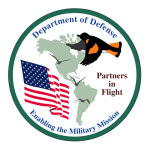CHECKLIST OF BIRDS

DUGWAY PROVING GROUND

BLACK-THROATED SPARROW
by J. Cancalosi/VIREO
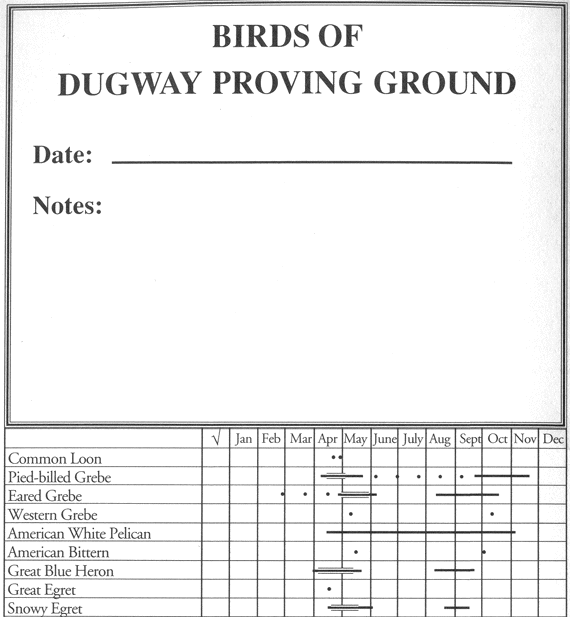
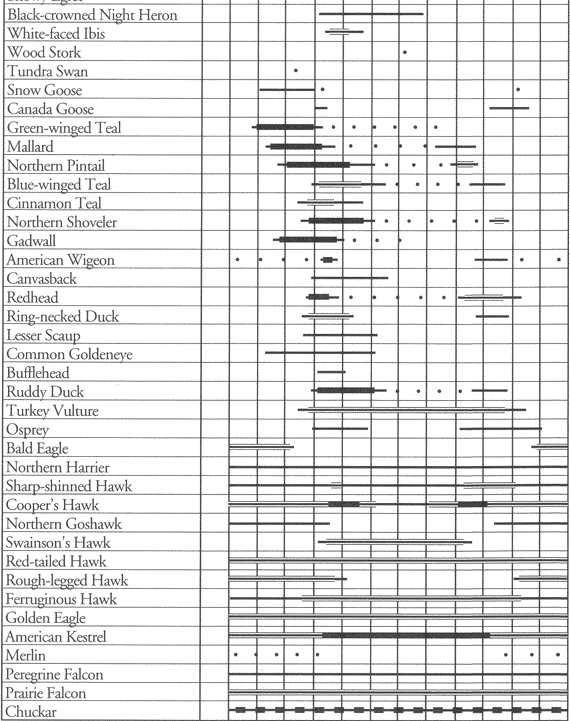

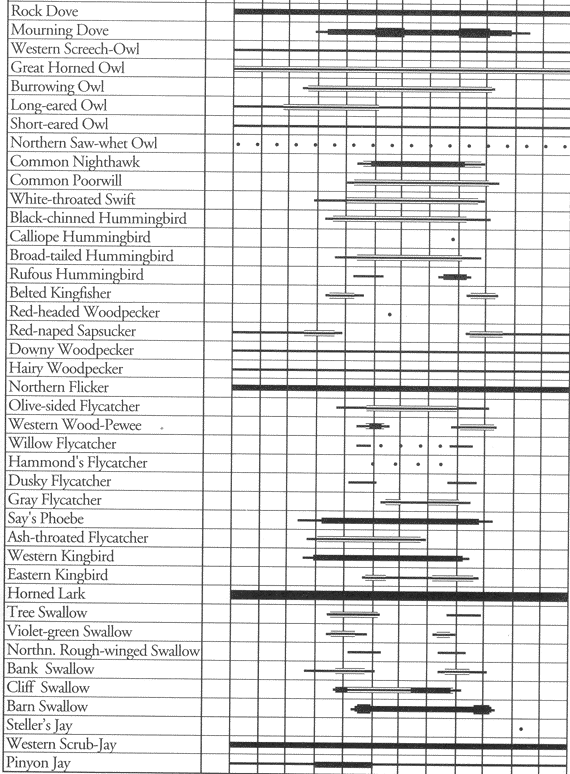

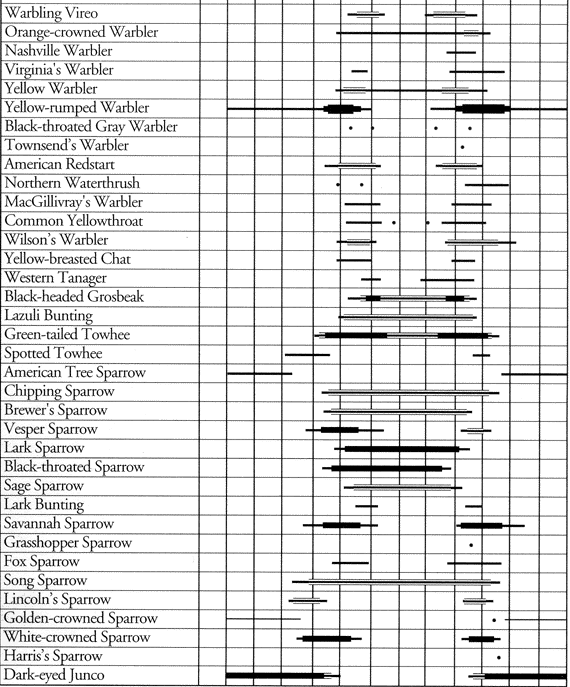
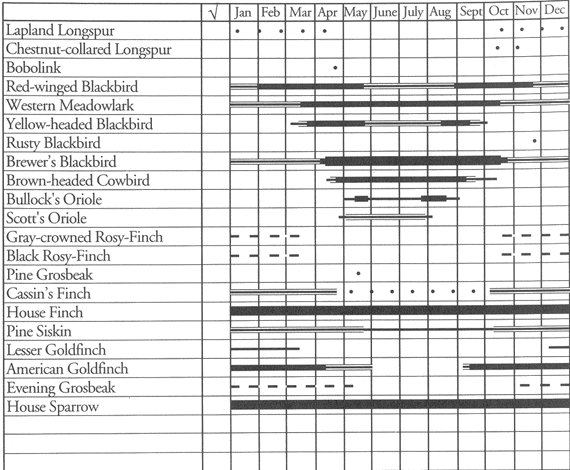

ARMY RESOURCE MANAGEMENT
The Department of Defense manages more than 25 million acres worldwide. Much of this land is in sensitive wetlands along coastlines and riverbanks, some of the most ecologically significant areas in the world. The location of these real estate holdings makes it imperative that the various military missions are planned and executed in harmony with the environment. DoD supports numerous partnerships with other Federal, State, local and private resource groups to promote such programs as the North American Waterfowl Management Plan, Neotropical Migratory Bird Conservation, Partners in Flight, Wetlands Protection and Enhancement, and Watchable Wildlife. To succeed in its mission, and to earn public confidence, DoD must emphasize natural resources stewardship in every aspect of its land use.
DUGWAY PROVING GROUND, UTAH
 U.S. Army Dugway Proving Ground was established in 1942. Named for the pioneer method of crossing mountain passes; to excavate trenching and haul wagons up the “dug way.” Comprising 798,855 acres, DPG is larger than the state of Rhode Island. The military mission, as part of Test and Evaluation Command (TECOM), is field and laboratory testing and evaluation of chemical and biological defense and detection systems, their delivery systems, and Army and Air Force unit training.
U.S. Army Dugway Proving Ground was established in 1942. Named for the pioneer method of crossing mountain passes; to excavate trenching and haul wagons up the “dug way.” Comprising 798,855 acres, DPG is larger than the state of Rhode Island. The military mission, as part of Test and Evaluation Command (TECOM), is field and laboratory testing and evaluation of chemical and biological defense and detection systems, their delivery systems, and Army and Air Force unit training.
Elevation ranges from salt flats of 4200 feet to peaks of about 7000 feet. Precipitation, mostly in the form of snow, averages 7 inches per year. English Village housing area, with abundant trees, acts as an oasis providing cover, food, and water not readily available elsewhere. DPG manages a large vegetated dune complex, perhaps one of the best undisturbed vegetated dunes remaining in the entire Great Basin. Basin and range playas are primarily active during spring migration, attracting numerous water and shorebirds. These seasonally wet areas are largely inaccessible for observation due to saturated clay soils.
Overall, DPG vegetation of can be classified as shrubsteppe in the foothills, salt desert scrub on the valley floors, interspersed with juniper-covered mountain islands. Cheatgrass, an introduced plant, is displacing portions of native shrub communities. Introduced through early settlement grazing practices, cheatgrass continues to increase due to current training activities and subsequent fire events. As much as 60% of native sagebrush habitat on DPG has been reduced by fire since the 1960’s.
There are 207 species of birds recorded from DPG. DPG has recently entered into a long-term agreement with Utah Division of Wildlife Resources to monitor resident and Neotropical birds under Partners in Flight. For information, contact the Directorate of Environmental Programs: 434-831-3734.
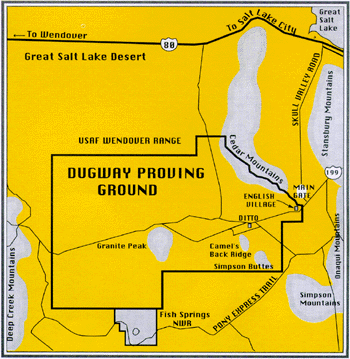
The U.S. Army and Partners in Flight are cooperating on an international program to promote the conservation of migratory birds. For information, contact DoD Partners in Flight by email or call 540-349-9662.

